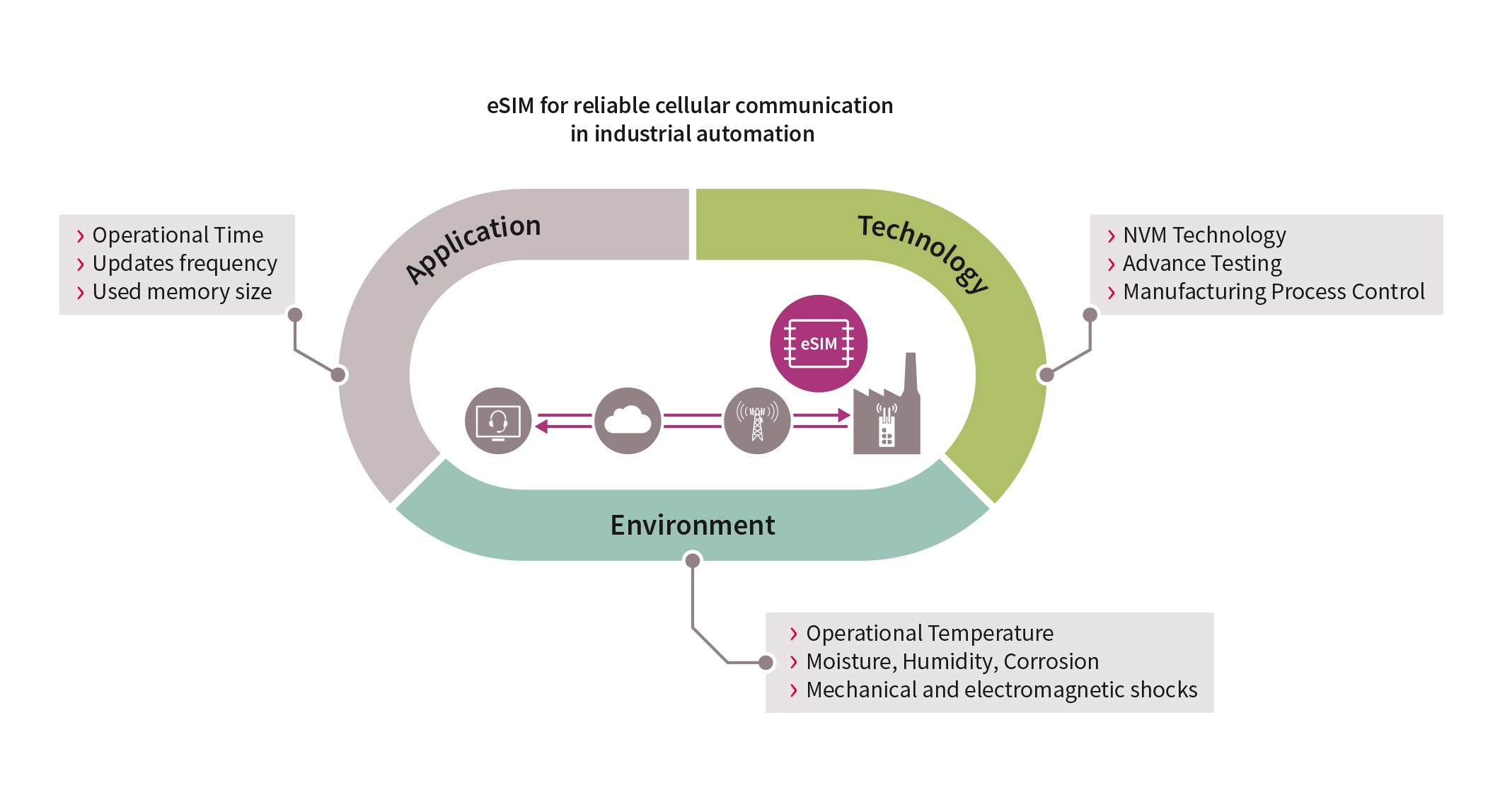If there is any technology that will radically influence industrial automation systems and manufacturing facilities, it is the Internet of Things (IoT). This has been understood by all highly industrialised countries in the world who want to improve competitiveness by using IoT technologies, including big data and analytics to take their industrial processes to the next level. As a result, government initiatives are being rolled out worldwide with the aim of making the fourth industrial revolution possible.
Cellular communications play an important role in this revolution: The ubiquity of the cellular network and the ease of integrating cellular connectivity to industrial devices make it possible to connect remote production sites that are otherwise difficult or expensive to connect. Additional initiatives to optimise the cellular network for machine-type communications such as LTE-M are under definition. Moreover, a significant number of Mobile Network Operators (MNOs) and Mobile Virtual Network Operators (MVNOs) are enhancing their offering of M2M communication by making cellular connectivity even more appealing, says Eduardo Andres Morral Fuentes product marketing manager M2M, Infineon Technologies AG.
At the heart of all these initiatives, is the embedded SIM card (eSIM) which brings a number of advantages for a smooth adoption of cellular connectivity into industrial environments.
How can the eSIM help in the context of M2M communication?
In essence, the eSIM provides the same functionality as traditional SIM cards but in contrast to the latter, the eSIM enables the change of operator profiles remotely at any time and comes in a miniaturised, solderable form factor. This concept is nothing new; in fact, eSIM’s have have already been in use for M2M applications for several years and many eSIM vendors are providing proprietary solutions to manage subscriptions over the air. Thanks to GSMA’s efforts to define a standard eSIM implementation, industry players have come to a consensus and the eUICC specification is now being accepted by all main players in the industry.
For industrial device manufacturers, the eSIM increases design flexibility due to its small footprint, making better use of the available space. It also simplifies the manufacturing processes by enabling a single stock-keeping unit and facilitating global distribution. It simplifies the rollout for end customers (e.g. manufacturing plants), and since there is no need to separately purchase and distribute SIM cards for specific equipment, it helps reduce operational costs. Customers also have the possibility to change service provider at any time, for example if the quality of the network deteriorates or at the end of contract.
Nevertheless, all these benefits might not be realised in industrial environments if the quality of the eSIM doesn´t match the challenging requirements of industrial applications.
Why does eSIM quality matter especially in industrial environments?
Historically, SIM cards have always been used for consumer devices which means that in many cases they aren’t optimised to work under difficult conditions. Industrial environments are subject to extreme temperatures, mechanical shocks, humidity, and vibrations. Moreover, unlike cell phones, industrial machines must operate uninterruptedly.
The promise of highly automated and optimised industrial processes using IoT technologies won’t hold true if a tiny but essential component like the SIM can’t cope with the quality challenges of industrial environments. Thus, selecting the right level quality for the eSIM in accordance with the application environment is indispensable for manufacturing companies. In this context, industrial device manufacturers need to understand and incorporate eSIM quality into their decision-making process.
Understanding eSIM reliability
SIM vendors offer eSIM in different quality levels and form factors. Before making a decision, it is important for industrial device manufacturers, together with the eSIM providers, to look into three main aspects that will affect the reliability of the eSIM: technology, application and environmental conditions.
Silicon technologies might react differently to similar operational conditions. For example, some technologies might have higher failure rates at higher temperatures and others at lower temperatures. In order to understand the effects of technology, device manufacturers must work together with the eSIM provider to make sure they are choosing the adequate one. They should also verify that the provider has the right measures in place to guarantee the promised quality such as advance testing, tightened process controls and quality gates as well as advance mechanisms to protect memory against excessive stress.
The application, also known as mission profile, defines how the eSIM will be used, and has a significant influence on the overall failure rate of the eSIM. The mission profile involves understanding the active operational time, the frequency of updates and the size of memory used.
Environmental conditions are normally determined by variables such as moisture, humidity, corrosion, and mechanical and electromagnetic shocks. Yet, the most influential variable is the operational temperature. The temperature range from -25 to 85°C of a traditional SIM card is unlikely to fit the job.
All in all, by taking these factors into account, customers will make sure their industrial automation network isn´t disturbed by malfunction of a wrongly specified eSIM. In this regard, Infineon Technologies has vast experience in understanding customer’s applications and is committed to guiding them to the best decision for their eSIM implementations.
Further information is available at: www.infineon.com/m2m
The author of this blog is Eduardo Andres Morral Fuentes, product marketing manager M2M, Infineon Technologies AG.
Comment on this article below or via Twitter: @IoTNow_ OR @jcIoTnow










